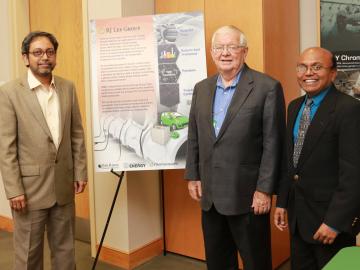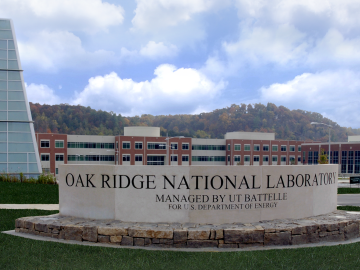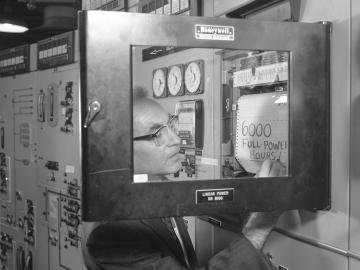Filter News
Area of Research
- Advanced Manufacturing (3)
- Biological Systems (3)
- Biology and Soft Matter (1)
- Building Technologies (2)
- Chemical and Engineering Materials (2)
- Chemistry and Physics at Interfaces (6)
- Clean Energy (41)
- Computational Chemistry (1)
- Energy Frontier Research Centers (7)
- Functional Materials for Energy (6)
- Fusion Energy (1)
- Geographic Information Science and Technology (2)
- Isotope Development and Production (1)
- Materials (39)
- Materials Synthesis from Atoms to Systems (5)
- Materials Under Extremes (6)
- Neutron Data Analysis and Visualization (2)
- Neutron Science (10)
- Nuclear Science and Technology (6)
- Quantum Condensed Matter (2)
- Reactor Technology (1)
- Supercomputing (20)
- Transportation Systems (2)
News Type
Date
Media Contacts

By using additive manufacturing to print active components of motors, Oak Ridge National Laboratory researchers are conducting research that cannot be done with conventional methods. “To date, 3-D printed induction motors are made of plastic core pieces with copper windings ...

High-resolution imaging of materials produces complex, copious data. Researchers at Oak Ridge National Laboratory are developing a visual analytics system that could essentially “look over a scientist’s shoulder,” learning from human actions and improving its predictions of ...

Designing alloys to withstand extreme environments is a fundamental challenge for materials scientists. Energy from radiation can create imperfections in alloys, so researchers in an Energy Frontier Research Center led by the Department of Energy’s Oak Ridge National ...

RJ Lee Group has signed an agreement to license an invention developed at the Department of Energy’s Oak Ridge National Laboratory that converts waste rubber into a valuable energy storage material.
The technology turns rubber sources such as tires into carbon blac...

The Department of Energy’s Oak Ridge National Laboratory hopes to add a second target station at its Spallation Neutron Source (SNS) in the next 10 years in order to enhance capabilities of in-depth studies of the molecular structure of materials.
Ken Herwig of O...

Catalysts that power chemical reactions to produce the nylon used in clothing, cookware, machinery and electronics could get a lift with a new formulation that saves time, energy and natural resources.

Award-winning author Richard Rhodes, who wrote the book “The Making of the Atomic Bomb,” told an Oak Ridge audience that despite new forms of clean energy being developed, coal is still the world’s primary producer of energy, listing several reasons.
“In a world...

Advances in ultrathin films have made solar panels and semiconductor devices more efficient and less costly, and researchers at the Department of Energy’s Oak Ridge National Laboratory say they’ve found a way to manufacture the films more easily, too.
Typically the films—used b...

Engines, laptops and power plants generate waste heat. Thermoelectric materials, which convert temperature gradients to electricity and vice versa, can recover some of that heat and improve energy efficiency. A team of scientists at the Department of Energy’s Oak Ridg...

The Molten Salt Reactor Experiment (MSRE), which ran a brief four years in the 1960s but earned an enduring legacy as an innovative reactor technology concept, this year marks a half century since its June 1965 startup. A workshop on molten salt reactor technologies, "From the ...




